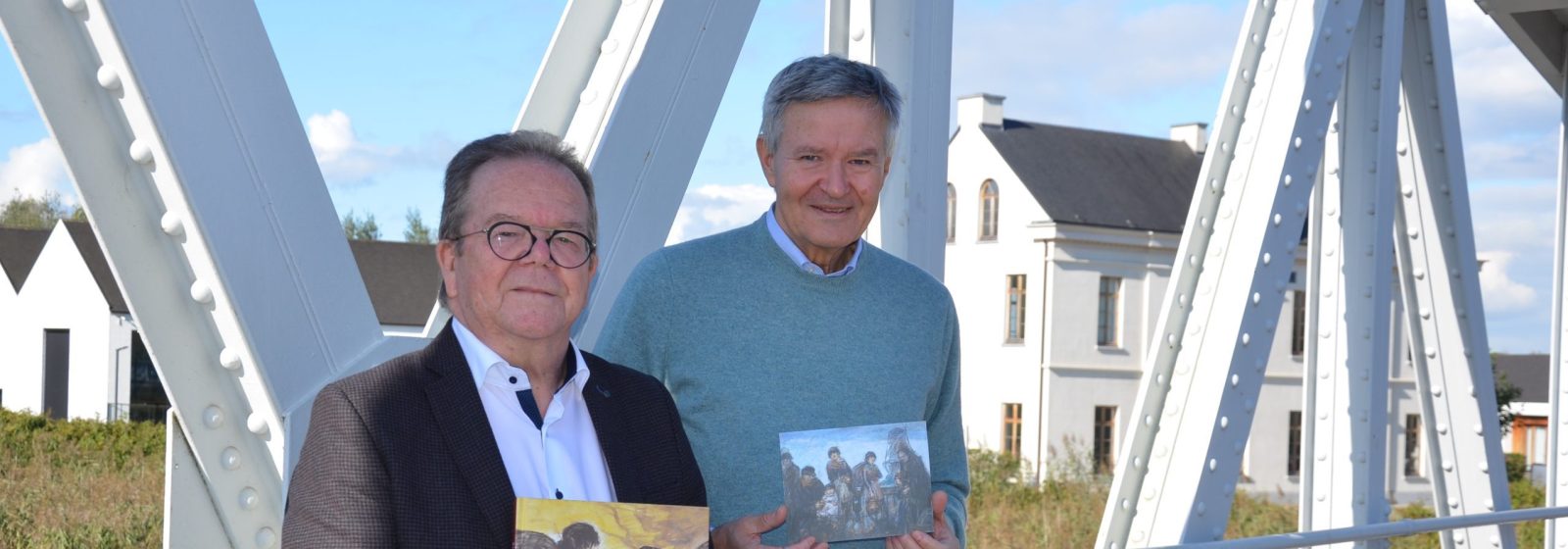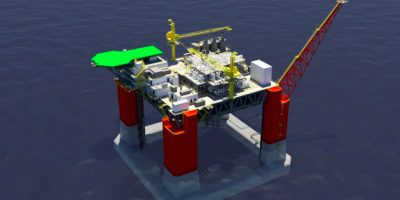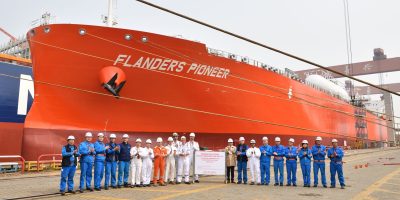
On the run from the German occupiers, Antwerp ‘port artist’ Eugeen Van Mieghem roamed the Waasland region during the First World War. Sixty of his war drawings can soon be admired in the Koolputten in Waasmunster.
Eugeen Van Mieghem saw the light of day on 1 October 1875. Born in the heart of Antwerp’s old port, he was confronted with the hard life on the Scheldt quay from his youth. His father Henri was a ship charterer, while his mother Virginie ran a café. Like no other artist, Van Mieghem is linked to life in and around the port of Antwerp, emigration to America and the related history of the Red Star Line, but some of his works also have a link to the Waasland region.
Rooman Mill
“During the siege of Antwerp, the Van Mieghem family, like most of the population, fled the city. They hoped to find a safe haven in the ‘Land of Waas’,” outlines Erwin Joos, who has been working for forty years to make Van Mieghem’s rich oeuvre accessible to the general public. Joos himself, incidentally, has a professional past in the port of Antwerp. Before becoming curator of the ‘Eugeen Van Mieghem’ museum, he worked for eight years in CMB’s financial department.
During his tour of the Waasland region, the artist continued to draw the desperate and helpless civilians. Central to his war work is usually his mother, with the family around her. “One of the works shows the famous Rooman mill, which you can still admire today in Sint-Pauwels (Sint-Gillis-Waas). Like a war photographer, he used paper and pencil to convey the story of the tried and tested Antwerp refugees. Some of his sketches suggest that he was close to the front line on several occasions. As a refugee himself, he was in the midst of chaos and panic of WWI.”
A century later, Van Mieghem’s down-to-earth drawings and paintings seem sadly topical. “The migration issue, armed conflicts, human rights violations. They are all hot topics today,” says Joos.
Ellis Island
From 10 November, you can admire a selection of his drawings of ‘The Great War’ at the Koolputten in Waasmunster. That location was not chosen by chance. “The Koolputten is located on a former unloading quay on the Durme that handled daily ship transport to and from Antwerp. In that context, there is already a long-standing relationship between Erwin Joos, inspirer of the Eugeen Van Mieghem Foundation and the cultural house of De Koolputten. And precisely this shared interest in the hard work of port and quay activities in the past is the basis for a unique exhibition,” outlines Freddy Huylenbroeck of Kunstforum De Koolputten. “Numerous drawings, pastel and oil sketches illustrating the trajectory of the flight of Van Mieghem and his family were created here in the neighbourhood.”
De Koolputten is in good company, as just last summer Erwin Joos travelled to Ellis Island in New York to donate an oil painting of a female migrant by Van Mieghem to the Migration Museum for permanent display there. Earlier this year, it also became known that the Eugeen Van Mieghem Foundation signed a donation agreement with the Royal Museum of Fine Arts Antwerp (KMSKA) for 226 works. But before that transfer is a fact, a selection of sixty of his war drawings can therefore already be admired in Waasmunster. “By the way, Nicolas Saverys informed me that his artworks will also get a place in the annual report of shipping group Exmar,” Joos concludes with a bouncer.
The exhibition at Koolputten Kunstforum runs from 10 November to 22 December and is free to enter, every Sunday from 11am to 5pm. Guided tour by curator Erwin Joos on Sunday 22 December at 11am.




